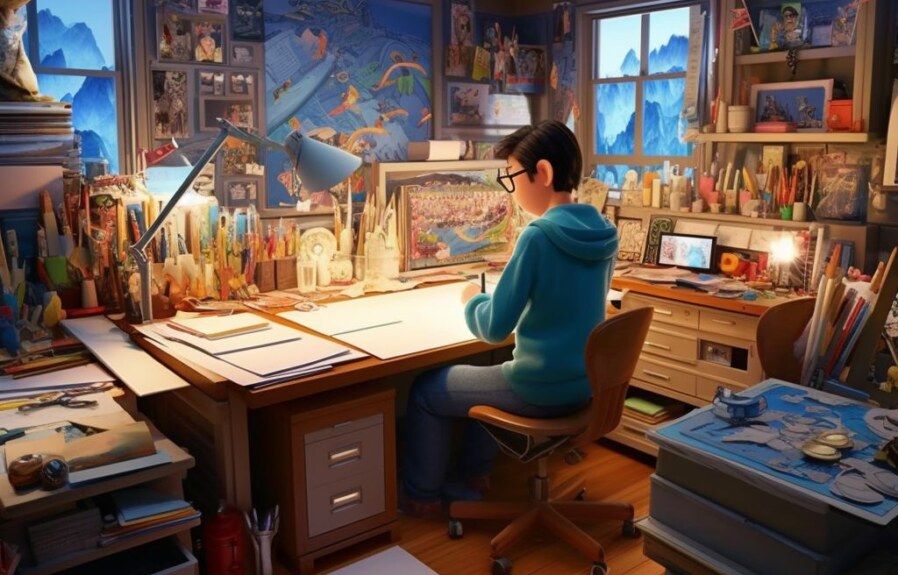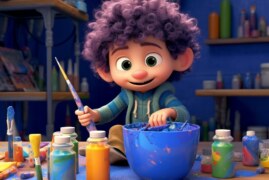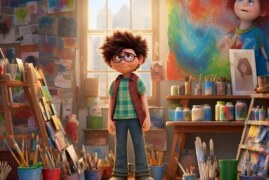Do you have a love for all things anime? Are you eager to learn how to draw your favorite anime characters with accuracy and confidence? While mastering anime drawing requires dedication and practice, the best place to start is by learning how to draw the body. Every anime character has their own unique body type and proportions, and mastering these details will help you bring your drawings to life. So, grab your pencils and let’s dive into the world of drawing anime bodies!
1. Understanding the Basics: Proportions and Anatomy of Anime Body
In order to draw anime characters, it’s important to understand the basics of proportions and anatomy. Here are some points to keep in mind:
– Anime characters tend to have exaggerated features, so you’ll need to be comfortable with drawing larger eyes, longer limbs, and smaller noses and mouths.
– The head of an anime character is typically larger in proportion to the body than in real life. This creates a cute, cartoonish effect.
– When drawing the body, keep in mind that the limbs are typically longer and thinner than in real life. The torso is often shorter and broader by comparison.
– It can be useful to practice drawing basic forms like circles, rectangles, and triangles when working on proportions. This can help you understand how the parts of the body fit together and relate to each other.
Remember, these are just general guidelines. As you become more comfortable with drawing anime characters, you may find that you want to deviate from these proportions and create your own unique style. The key is to have fun and experiment!
2. Step-by-Step Guide: Sketching the Outline of an Anime Body
To start sketching an anime body, it’s important to have a good understanding of the proportions and angles that make up the basic form. Follow these steps to sketch a basic anime body outline:
1. Draw the head – start with a circle for the head and a smaller circle for the neck. The neck should be about the same width as the head.
2. Sketch the torso – draw a long, slender rectangle for the torso. The torso should be about three times the length of the head.
3. Add limbs – draw two more rectangles for the arms and two more for the legs. The arms should be one and a half times the length of the head, and the legs should be two and a half times the length of the head.
4. Add joints – sketch in the joints where the limbs attach to the torso. Use circles for the shoulders and hips, and small rectangles for the elbows and knees.
5. Add details – once you have the basic outline in place, you can start adding details like the hands, feet, facial features, and clothing.
Remember to keep your pencil lines light and build up your drawing gradually. You can always go back and refine the details later. With practice, you’ll be able to sketch anime bodies with ease.
3. Adding Volume and Depth: Learning the Techniques for Shading and Highlights
Once you have mastered the basics of drawing, it’s time to take your skills to the next level by learning how to add volume and depth to your artwork. This essential process requires a knowledge of shading and highlighting techniques, which will provide the illusion of light and shadow in your drawings. Here are a few tips to help you get started:
– Start by understanding the different types of shading. You can use hatching, cross-hatching, stippling, or smudging to create various effects. Experiment with each technique to determine which one works best for your piece.
– Determine the light source in your drawing. This is the area in which light is coming from, and it will impact the way you shade your piece. Start by drawing a small sun or orb on your page to show the location of the light.
– Use your medium of choice to create shades and highlights. You can use graphite, charcoal, or colored pencils to achieve different effects. Remember to use softer strokes for darker areas, and lighter strokes for highlights.
– Finally, don’t be afraid to experiment with layering. Layering colors or shades can create depth and texture, adding a whole new level of interest to your artwork.
By practicing these shading techniques, you’ll become more skilled at adding dimension and realism to your drawings. With time and patience, you’ll be able to create artwork that stands out and captures attention.
4. The Art of Clothing: Drawing Clothes on Anime Figures
Drawing clothes on anime figures is an art that requires a keen eye for details and an understanding of fashion trends. Here are some tips and techniques to help you get the hang of it.
– Observe fashion trends
Take inspiration from fashion magazines, runways, and social media to keep up with trends. Knowing what’s in fashion will help you create more realistic outfits for your anime figures.
– Break down the clothing
Break down the clothing item into its basic shapes (rectangle, triangle, circle) to create a rough sketch. Then work on the smaller details such as folds, patterns, and buttons.
– Practice makes perfect
The key to mastering the art of drawing clothes is practice. Keep drawing and refining your techniques to make your artwork better each time. Experiment with different materials, pencils, and colors to find your style.
In conclusion, drawing clothes on anime figures is an art that requires constant practice and observation. By staying up-to-date with fashion trends, breaking down clothing items, and practicing regularly, anyone can master this skill.
5. Perfecting the Final Touches: Adding Facial Features and Details to your Anime Character
Once you have finished drawing the basic outline of your anime character, the next step is to add facial features and details to bring them to life. This step is where you can showcase your creativity and express your character’s personality in their appearance. Here are a few tips to help you perfect the final touches:
• Eyes: Draw the eyes first, as they are the most expressive part of the face. Try experimenting with different eye shapes and sizes to match your character’s personality. Don’t forget to add eyebrows and eyelashes for more definition.
• Nose: Although the nose is a small feature, it can make a significant impact on your character’s appearance. Keep in mind that anime noses are usually simple and not too detailed.
• Mouth: Anime mouths are typically small and simple, but they can be expressive depending on the situation. Consider the mood of your character and choose a mouth shape to match.
• Hair: Hair is an essential part of any anime character. Take your time to create a unique hairstyle that fits your character’s personality. Experiment with different colors and shapes to find the perfect look.
Remember, the key to creating a captivating anime character is in the details. Take your time to perfect the final touches and let your character’s personality shine through their appearance.
People Also Ask
1. What are the basic guidelines for drawing an anime body?
To draw an anime body, one must first establish proportions and guidelines. These include drawing a circle for the head, lines for the spine, and ovals for the chest and hips. From there, one can add details such as limbs and clothing.
2. How do you draw anime muscles?
To draw anime muscles, one must first study the anatomy of the human body. Once familiar with the muscles, one can then draw them on the character using defined lines and shading to add depth and detail.
3. How do you draw an anime body step by step?
To start drawing an anime body step by step, one must begin with establishing proportions and guidelines. From there, one can add details such as facial features and clothing before moving onto the limbs and rest of the body.
4. What are the common mistakes when drawing an anime body?
Common mistakes when drawing an anime body include disproportionate features, incorrect placement of limbs, and lack of understanding of anatomy. It’s important to study the human body and practice regularly to avoid these common errors.
5. How do you draw anime poses?
To draw anime poses, one must first have an understanding of the character’s personality and mood. From there, one can create a pose that fits the character’s demeanor and add details such as body position and facial expression.
Conclusion
Drawing an anime body requires practice and a basic understanding of anatomy. By establishing proportions and guidelines, one can then add details and create a dynamic character. It’s important to study the human body to avoid common mistakes and to practice regularly to improve skills.



